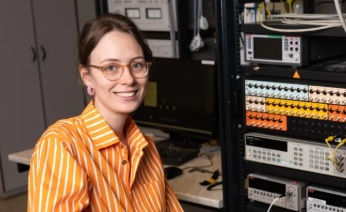Publication of joint results from cooperation betweeen IMEC Leuven, Shanghai Institute of Microsyste
- LNSM
- Dec 3, 2013
- 1 min read
Results of joint research from cooperation between IMEC Leuven, Shanghai Institute of Microsystem and Information Technology, Chinese Academy of Sciences and Suntech R&D Australia were published in Solar Energy Materials and Solar Cells, 2014, Vol 122, pages 31-39, doi: 10.1016/j.solmat.2013.11.017, see http://www.sciencedirect.com/science/article/pii/S0927024813006016.
The hydrogen plasma passivation of thin film polycrystalline silicon (pc-Si) was investigated in conjunction with plasma texturing process to make efficient heterojunction solar cells. The pc-Si layers were first treated using direct and remote hydrogen plasma technologies. The heterojunction solar cells were then fabricated by subsequent deposition of i/n+ a-Si:H. Hydrogenation at high temperature (610 °C) results in enhanced dissolution and diffusion of hydrogen in pc-Si by a factor of about 3 and 4, respectively, in comparison with those at low temperature (420 °C). The hydrogen atoms in the pc-Si layer mainly bond to the silicon dangling bonds and form complexes with dopant atoms. In addition, platelets defects are generated by the hydrogen plasma in the sub-surface region of pc-Si hydrogenated at 420 °C and cause higher saturation current in the space charge region whilst they form in the region deeper than 1 ?m at 610 °C. Removal of the platelets using SF6/N2O plasma post-texturing after low-temperature hydrogenation not only enhances the short circuit current but also improves the open circuit voltage and the fill factor simultaneously. Combining plasma pre-texturing with high-temperature hydrogenation, the best 2 µm-thick pc-Si heterojunction solar cell reaches an efficiency of 8.54%.




Comments